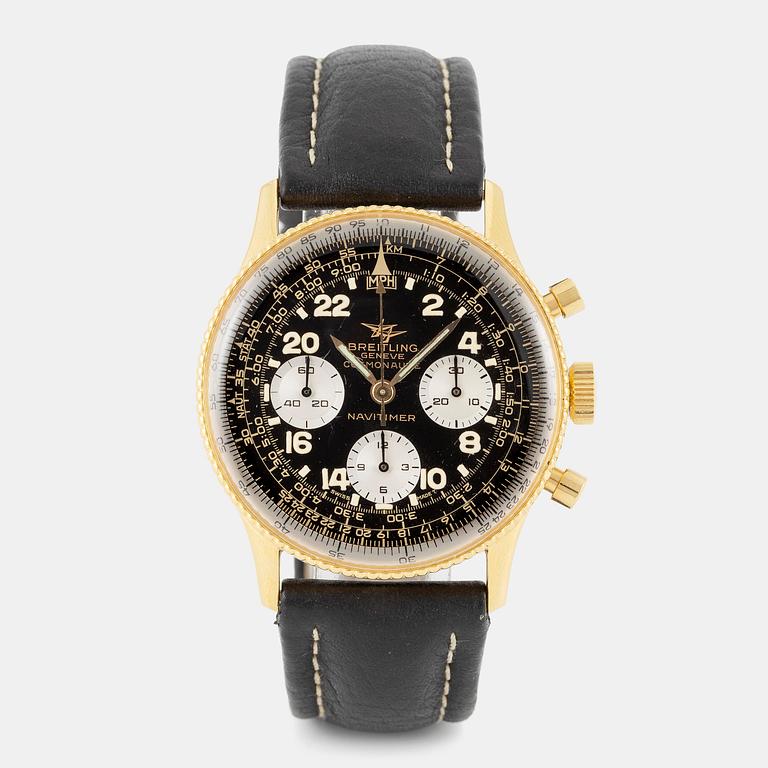Breitling, Navitimer, Cosmonaute, chronograph, ca 1965.
Case size: 41 mm
Material: gold plated
Movement: manual, caliber Venus 178 (WOG)
Year: circa 1965
Crystal: plastic crystal
Bracelet: leather strap
Reference number: 809
Serial number: 1'011'766
Accompanied by: box
Hands with newer luminous material. The watch is in well-preserved vintage condition with light signs of wear consistent with age.
The movement is running at the time of cataloguing, Bukowskis does not guarantee the future function of the movement. Please note that the movement has not been tested for timekeeping accuracy and may need a service at the buyer's expense. Watches have been opened to examine movements therefore no warranties are made that the watches are water-resistant. Potential buyers should inspect each watch to satisfy themselves as to condition. For more information, please read our Conditions of Purchase.
More information
Breitling’s Navitimer was already hailed as the definitive pilot’s chronograph by the early 1960s, thanks to its distinctive circular slide rule that allowed aviators to perform in-flight calculations. Yet in May 1962, it secured an even greater claim to fame: becoming the first Swiss wrist-worn chronograph in space. NASA astronaut Scott Carpenter personally requested a customized Navitimer for his Mercury-Atlas 7 mission, one adapted with a 24-hour dial to distinguish day from night in orbit, where sunrises and sunsets come in rapid succession.
He also wanted a stretchable metal bracelet that could fit over his spacesuit, plus a bezel easy to operate with gloved hands. Despite a production window of mere weeks, Willy Breitling and his team delivered precisely what Carpenter needed—later known as the Navitimer Cosmonaute, in time for blastoff on May 24, 1962. Carpenter orbited Earth three times before splashdown in the Atlantic, where saltwater heavily damaged the watch. Nonetheless, Breitling preserved the corroded timepiece, which remains a tangible memento of humanity’s early steps into space. Today, the Navitimer Cosmonaute stands as both an emblem of Breitling’s technical prowess and a tribute to our ongoing fascination with flight, reaching beyond the cockpit and into the cosmos.
























































